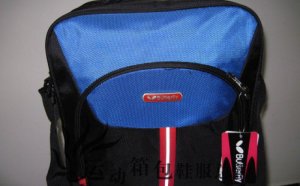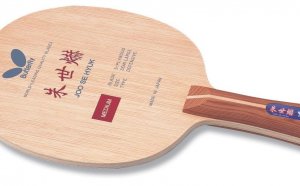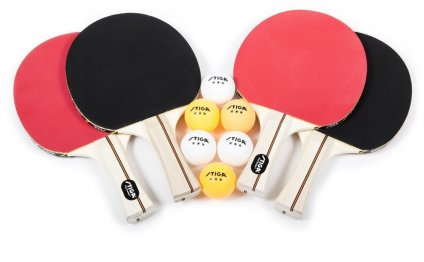
Best Beginners Table Tennis Racket
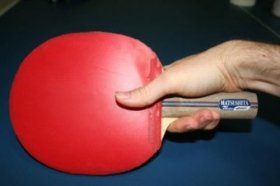 When I’m given a new group of beginners, before I start teaching any strokes, I always go over the basics of table tennis grip and how to hold the bat correctly. It’s very important that you master this early on as it is a slow and painful process trying to alter you grip later in your development.
When I’m given a new group of beginners, before I start teaching any strokes, I always go over the basics of table tennis grip and how to hold the bat correctly. It’s very important that you master this early on as it is a slow and painful process trying to alter you grip later in your development.
If you’re a beginner, well done for acknowledging the importance of a correct grip at this early stage of your table tennis. If you are reading this as a non-beginner, and realise that your grip is less that ideal, spend the time trying to correct it. Yes, it may make your shots slightly worse now but you’ll reap the rewards later on.
It’s worth pointing out that I’ll be talking about the shake-hands grip in this post. I may spend some time looking at the pen-hold grip in another post but to be honest it’s a grip that I know very little about.
I’ve taken a number of photos to highlight the characteristics of good and bad grip. I hope that this will help you to understand the important differences and ‘self-correct’ if you notice your own grip altering.
What does a correct table tennis grip look like?
A correct shake-hands table tennis grip should have…
- Your index finger on the backhand rubber.
- Your thumb tucked in on the forehand side.
- The other three fingers loosely wrapped around the handle.
- Little to no gap between the top of the handle and your hand.
- The ‘V’ or crease of your hand in line with the edge of the bat.
A lot of beginners try to play with two fingers on the bat, or not fingers (hammer grip). Some put their thumb up on the forehand rubber, others don’t wrap their fingers around the handle properly. Many have too big a gap between their hand and the top of the handle. I always emphasise that you should ‘shuffle/slide’ your hand up the handle until it reaches the top and then hold that grip loosely. These four points are relatively easy to enforce and you should be able to work out if you’re doing something wrong.
Point number five, that “the ‘V’ or crease of your hand should be in line with the edge of the bat” is the one that needs the most tweaking. This is really the job of your coach but I’ve made the photo below to help you identify any possible grip errors you may be having there.
It really all comes down to the location of the ‘V’ or crease in your hand! The correct grip has that crease directly in line with the edge of the bat. The backhand grip shifts that part of your hand round to the forehand side. As the thumb comes up and the hand slides around, the crease or ‘V’ is left on the forehand side. The forehand grip does the opposite. The the hand moves around the bat (the other way) the crease comes unto the backhand side.
What’s wrong with having a forehand or backhand grip?
Players that use these forehand or backhand-centred grips usually experience one of two problems;
- Some stick with one grip and end up with one good wing (depending on which grip they have used) and one poor wing. For example, having a backhand grip will give you the ability to have lots of control, because your thumb is on the bat, and develop a very wristy shot, because your grip has freed up your wrist to move. However, you will normally struggle to play a solid forehand, you’ll have a tendency to ‘hook’ the ball, or drop your wrist slightly.
- Others decide that they should switch between the two giving themselves the best of both worlds. This will often work in practice or at a level level when you have time to anticipate the ball and change your grip. Unfortunately, at a higher level you will realise that there just really isn’t the time to be worrying about changing grip in the middle of rallies and your reliance on changing grip will turn you into a weak player.
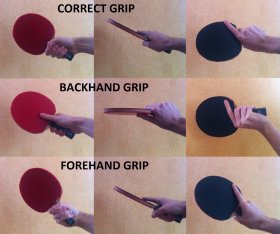 Final points
Final points
Here are a few final points to consider when thinking about your grip;
- Try to sort it out early, as a beginner, if you can but, if necessary, be prepared to move backwards slightly now in order to improve more in the future.
- Keep a nice soft loose grip on the handle of the bat.
- The tip of your index finger should, ideally, be on the backhand rubber (as opposed to sticking off the edge of the bat). This will give you a bit more control on your forehand.
- Follow the tips mentioned above for an orthodox grip and then stick with it. Try to avoid changing grip during rallies.
- Use the photo below to check where your ‘V’ or crease is. This is probably the area where you are most likely to have problems.
- Remember, everyone has a slightly different hand and a slightly different grip. Don’t get too hung up on if your grip is ‘perfect’ or not. Just make sure it’s not significantly poor in a way that will affect your game. You should feel comfortable and confident with your grip.
I hope you’ve found that useful. It is definitely worth spending a bit of time checking your grip to make sure you don’t have any serious problems with it. If you would like even more advice on how to hold your table tennis bat, watch this video ‘Get a Grip’ by Alois Rosario of PingSkills.
RELATED VIDEO
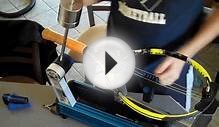
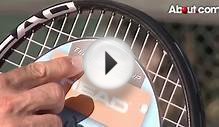
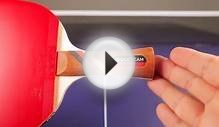
Share this Post
Related posts
Butterfly Table Tennis rackets
Zhang Jike Super ZLC FL Blade with Tenergy 64 2.1 Red Rubber and Tenergy 64 2.1 Black Rubber. All pro-line rackets are assembled…
Read MoreButterfly Table Tennis Racket Price
NL Hard Full Case: Hard outer shell provides excellent protection for your racket. One mesh pouch inside. Complete with carrying…
Read More
